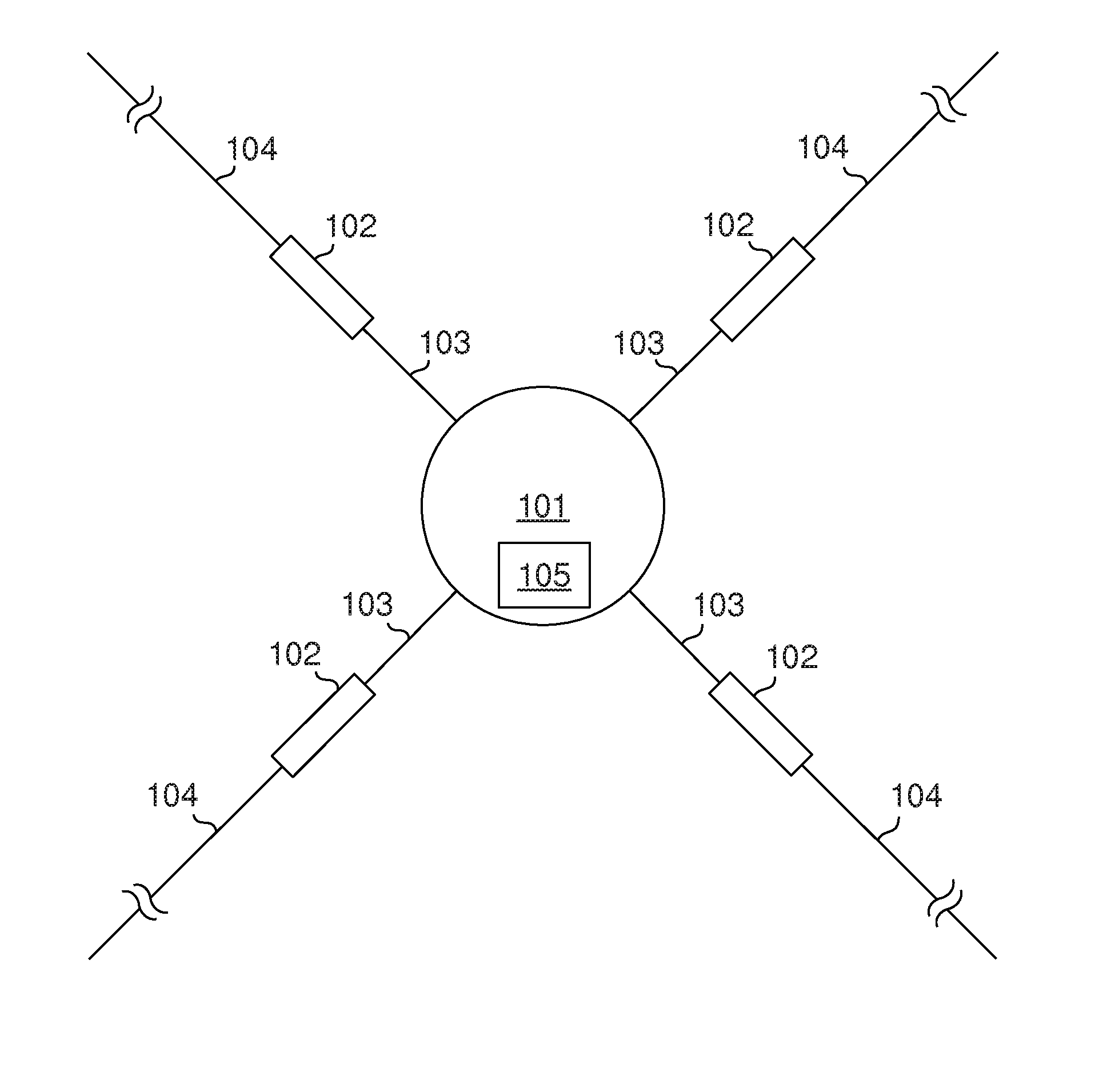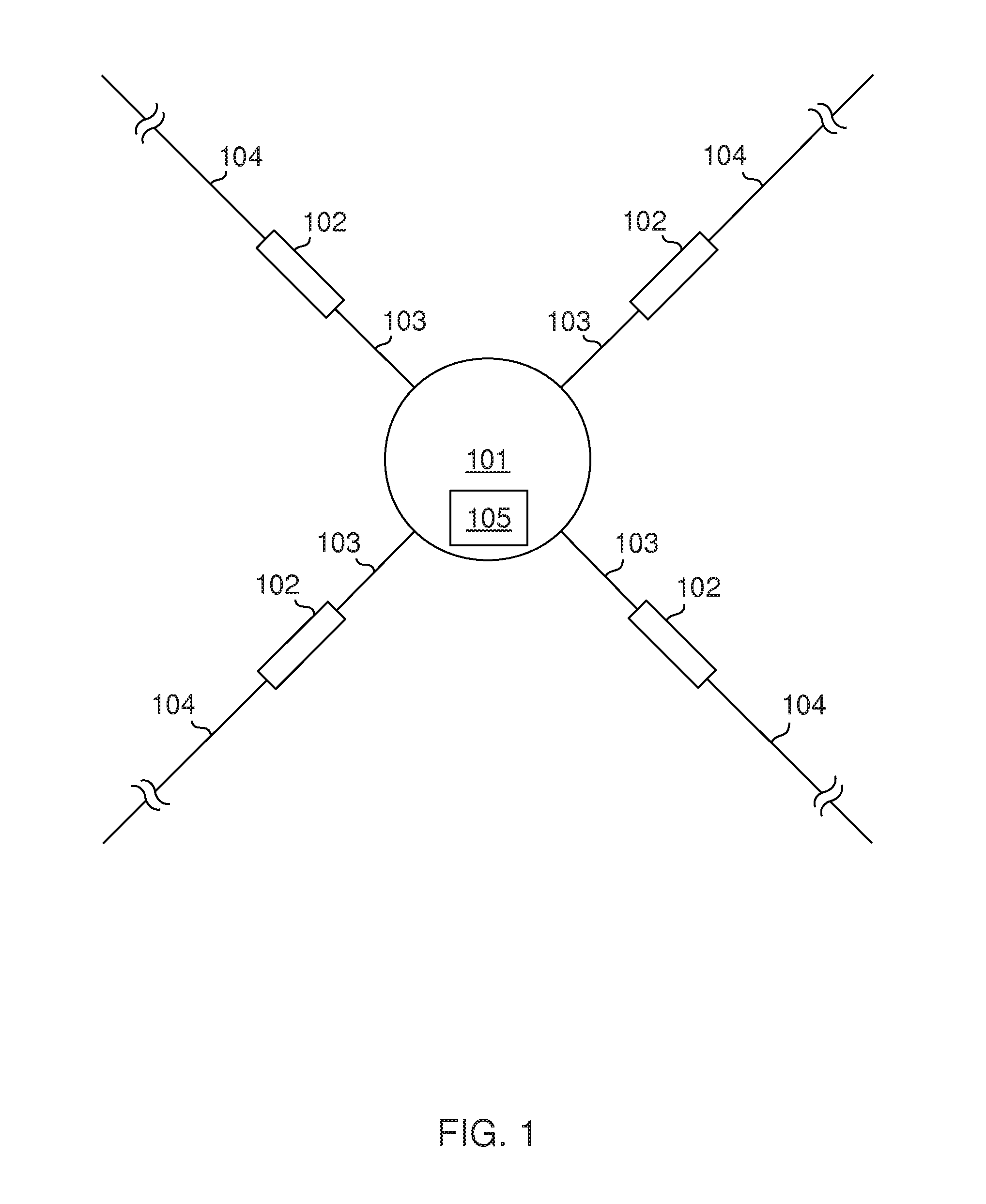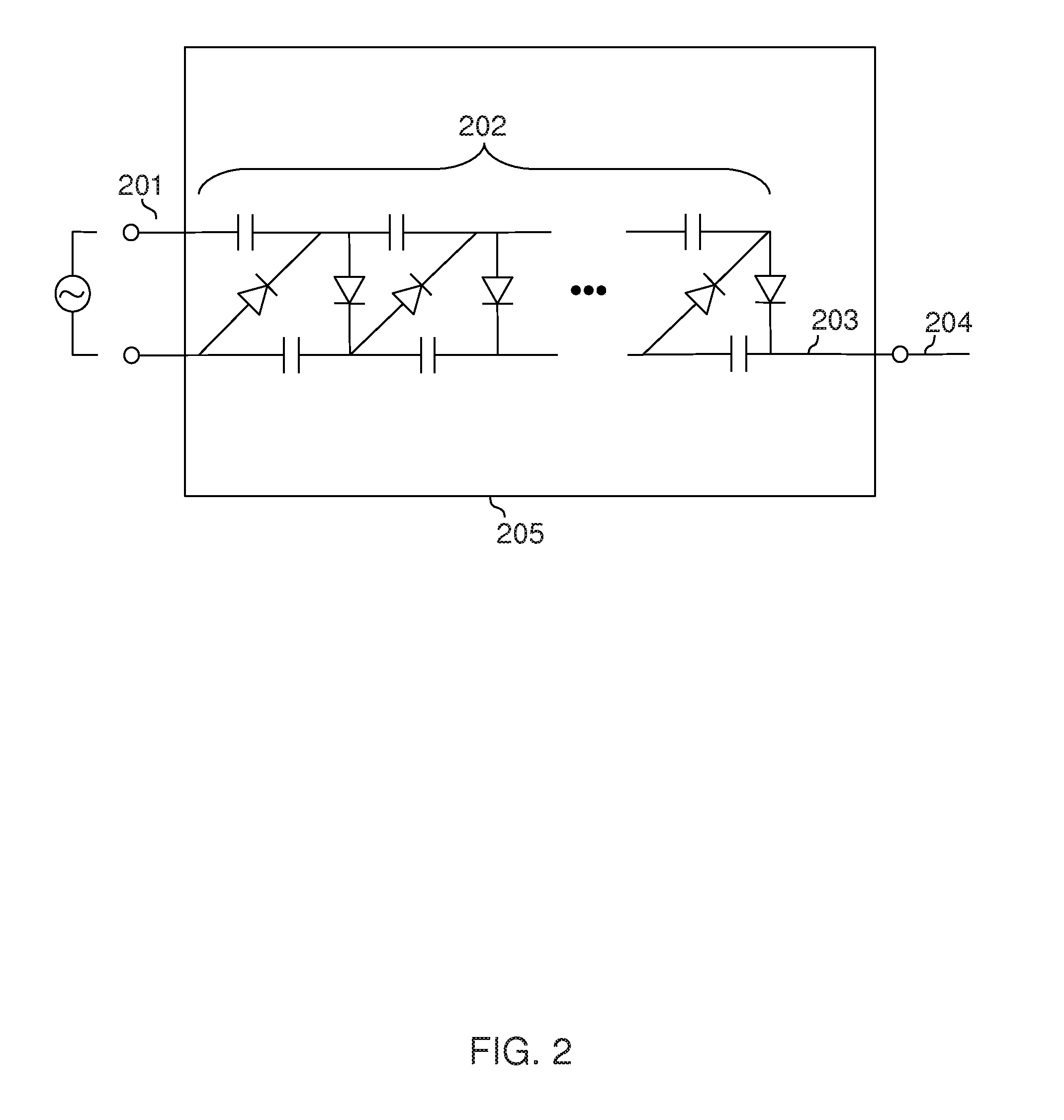Electric sail with voltage multipliers in tethers
- Summary
- Abstract
- Description
- Claims
- Application Information
AI Technical Summary
Benefits of technology
Problems solved by technology
Method used
Image
Examples
Embodiment Construction
[0026]Voltage multipliers for generating high voltages for tethers of an electric sail are moved out from the body of the spacecraft to locations where relatively high isolation distances are available between conducting components that are at high potential differentials. Such isolation makes possible much higher voltages at the tethers, which means higher charges, which means higher thrust obtained from the same area of the sail. Increasing the thrust reduces travel times, increases practical spacecraft loads, and allows the use of shorter tethers for the same thrust, therefore enabling new applications and bringing cost savings. Increasing the voltage may be a much more cost-efficient and lower-weight way of increasing thrust than increasing area. It is also likely to yield better tolerance against micrometeors than a larger sail with more tether area.
[0027]A further potential advantage of increasing tether voltage may be a reduction in the current flowing in the tether, which ma...
PUM
 Login to View More
Login to View More Abstract
Description
Claims
Application Information
 Login to View More
Login to View More - R&D
- Intellectual Property
- Life Sciences
- Materials
- Tech Scout
- Unparalleled Data Quality
- Higher Quality Content
- 60% Fewer Hallucinations
Browse by: Latest US Patents, China's latest patents, Technical Efficacy Thesaurus, Application Domain, Technology Topic, Popular Technical Reports.
© 2025 PatSnap. All rights reserved.Legal|Privacy policy|Modern Slavery Act Transparency Statement|Sitemap|About US| Contact US: help@patsnap.com



